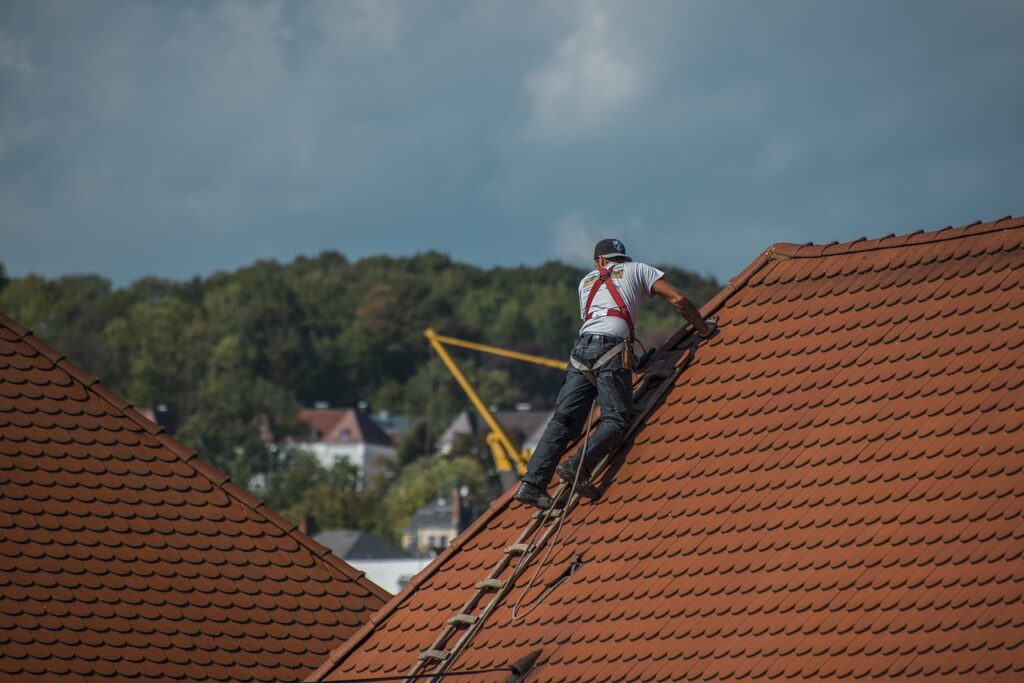- Serving London and surrounding areas
- Work for us

Replacing your roof can seem like a daunting and disruptive project, but understanding what to expect during a roof replacement can make the entire process smoother and less stressful. Whether you’re replacing an old, damaged roof or upgrading for better protection and aesthetics, knowing the steps involved and how long each phase takes will help you prepare your home and family.
In this guide, we’ll walk you through the key stages of a roof replacement, from initial inspection to the final cleanup. If you’re considering a roof replacement soon, read on to gain clear insights and helpful tips.
Before any work begins, a professional roofing contractor will conduct a thorough inspection of your existing roof. This assessment identifies damaged or rotten areas, determines the roofing materials you currently have, and checks the underlying structure.
The inspection allows the contractor to provide an accurate quote and timeline for your roof replacement. You’ll also discuss your preferences for new roofing materials—whether you want traditional tiles, slate, asphalt shingles, or more modern options.
Pro Tip: Ask your contractor about the estimated lifespan of your new roof material and any warranty options.
Roof replacement can create a lot of noise, dust, and debris. To protect your property and belongings, your roofing team will prepare the site carefully. This often involves:
Installing protective coverings over plants, outdoor furniture, and walkways
Moving vehicles away from the house to avoid damage from falling debris
Setting up dumpsters for old roofing materials and waste
Using tarps or netting around the house to contain debris
If you have pets or small children, it’s a good idea to keep them safely indoors during the work.
One of the most time-consuming parts of a roof replacement is removing the old roofing material. This step is essential to ensure a solid, smooth base for the new roof. The crew will carefully strip away shingles, tiles, or other coverings, then remove any damaged wood or underlayment underneath.
In some cases, especially with older roofs, contractors may find additional repairs are needed to the roof deck or structure before the new roof can be installed.
Once the old materials are removed, the roof deck — usually plywood or oriented strand board (OSB) — is fully exposed. The contractor will inspect it for any signs of rot, water damage, or structural weakness.
If any damaged areas are found, the team will replace or reinforce these sections. This step is crucial for the longevity and safety of your new roof. A solid, stable roof deck ensures the new shingles or tiles will be properly supported.
After repairing the roof deck, the next step is to install protective layers that shield your home from moisture. This includes:
Roofing underlayment: A waterproof or water-resistant membrane placed over the deck to act as an extra barrier.
Ice and water shields: Especially important in colder climates or areas prone to ice dams, these membranes are applied around roof edges and valleys.
Flashing installation: Metal strips installed around chimneys, vents, skylights, and valleys to prevent water penetration.
This stage is critical for preventing leaks and water damage over the roof’s lifetime.
With the underlayment and waterproofing in place, it’s time for the main event — installing the new roofing material. The process and time required will depend on the type of roofing you choose:
Asphalt shingles: Typically the quickest and most common choice, asphalt shingles are nailed down in overlapping rows.
Slate or tile roofs: Heavier and more time-consuming to install, these require careful placement and sometimes additional support.
Metal roofing: Panels or shingles made from steel or aluminum are installed with special fasteners.
Professional roofers will follow manufacturer guidelines to ensure your new roof is installed correctly and safely.
After the new roofing material is installed, the team will conduct a detailed inspection to ensure everything is secure and meets quality standards. They will also check that all flashing and seals are intact.
Cleanup is an important final step. Your contractors should remove all debris, nails, and leftover materials from your property. Some companies even use magnetic tools to sweep for stray nails, protecting your lawn and family.
The duration of a roof replacement varies depending on the size and complexity of your roof, weather conditions, and materials used. On average:
Small to medium residential roofs: 1 to 3 days
Larger or more complex roofs: Up to a week or more
Weather delays, such as rain or strong winds, can extend the timeline. Your contractor should keep you updated throughout the process.
Clear your driveway and front yard to provide easy access for vehicles and equipment.
Notify your neighbours about the upcoming work, especially if there will be noise or restricted parking.
Secure valuables and outdoor furniture to protect from dust and debris.
Plan for noise: Roof replacement is noisy, so arrange to work elsewhere if you need a quiet environment.
Pets: Keep pets indoors or in a safe, secure area away from the work zone.
A roof replacement is a significant investment in your home’s safety and value. Knowing what to expect during the process—from initial inspection to final cleanup—helps you stay prepared and confident.
Working with experienced and reputable roofing contractors ensures the job is done right, on time, and with minimal disruption to your daily life. If your roof shows signs of wear or damage, don’t delay getting a professional assessment — a timely roof replacement protects your home for decades to come.
Monday to Sunday: 6:00 AM – 8:00 PM (Open Daily)
Subscribe to our newsletter for the latest updates and offers.
© [2010 [A&A Roofing]. All Rights Reserved. Designed By Spectrum Media Solutions.